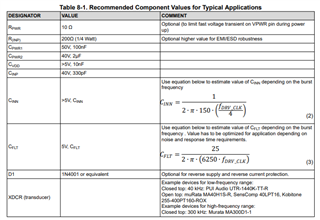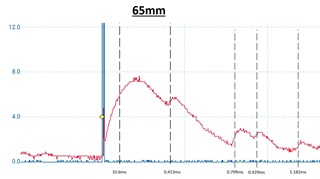Hi there I wonder if anyone can assist us.
We are using the TUSS4470 in a short distance measurement application using a 300kHz ultrasonic transducer. We can pulse the transducer successfully but arent getting any echo back. We have debugged our PCB and all seems well there so presume we have some settings issues, any help greatly appreciated.
Many thanks
Nick



